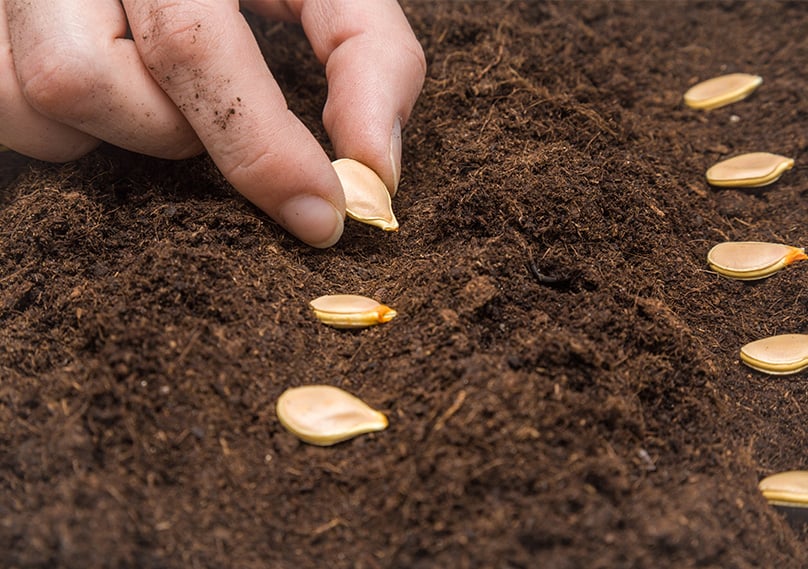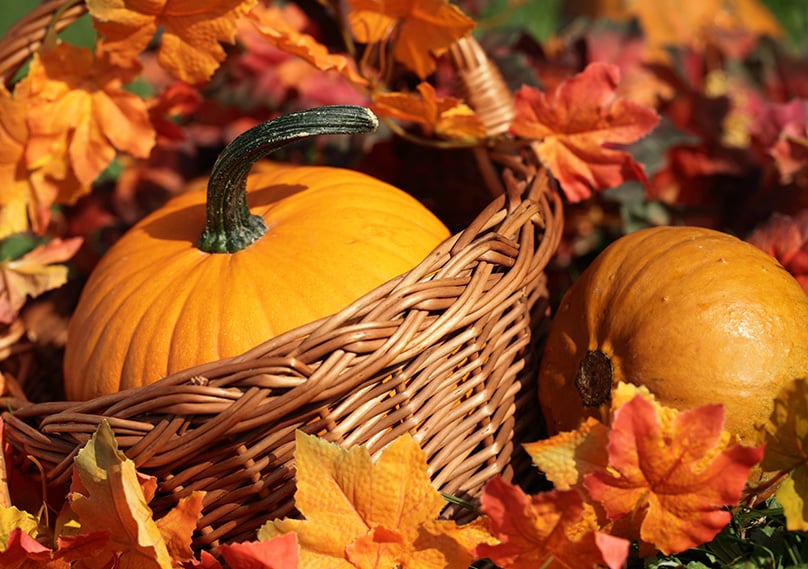Easy Ways to Count the Pumkins in Royale High
If there is one type of food that defines the fall season, it's pumpkins. Not only are the used to carve Jack-o-lanterns, but they're also an excellent source of nutrition.
Their seeds make healthy snacks, and their flesh and pulp are a wonderful ingredient for all types of savory and sweet dishes, including pies, muffins, and soups. You can even eat mashed pumpkin, much like you would potatoes.
If you love pumpkins, you can successfully grow a patch in your very own backyard. In this guide, we'll share some helpful tips that you can use to yield a wonderful crop of big, healthy pumpkins.
History of Pumpkins
Contents
- 1 History of Pumpkins
- 2 Growing Pumpkins
- 2.1 When to Plant Pumpkins
- 2.2 Where to Plant Pumpkins
- 2.3 Feeding Pumpkins
- 2.4 How to Water Pumpkins
- 2.5 Pumpkin Pests and Diseases
- 2.6 Pumpkin Growing Tips and Tricks
- 2.7 Harvesting Your Pumpkins
- 3 Conclusion
First, let's take a look at the history of pumpkins, as we always find that knowing more about a plant helps you develop a greater appreciation for it.
- Pumpkins are a member of the Cucurbitacea (gourd) family.
- The word pumpkin is derived from the Greek word "peopon", which in English, translates to "large melon".
- The French word for "peopon" is "pompon" and the latter was changed to "pumpion" by the English.
- Colonists in America changed the word "pumpion" to the word "pumpkin", the name that this vegetable is still called.
According to archeological evidence, pumpkins are considered a winter squash and are native to the southwest part of the United States, Mexico, and throughout South American countries, including Columbia, Ecuador, and Peru.
These hardy veggies have been cultivated since around 3,500 BC. Pumpkins and maize, or corn, are the oldest known crops grown in the western hemisphere. It is believed that Native Americans roasted strips of pumpkin on open fires for food.

Some Native American tribes also dried out strips of pumpkin and used them to create woven mats.
Pumpkin was a very popular source of food among American colonists. One of the most popular ways that pumpkins were prepared by colonists was removing the tops, de-seeding the vegetables, and filling the inside of the squash with a mixture of milk, honey, and spices and then baked. This preparation is believed to be the origin of modern-day pumpkin pie.
Christopher Columbus took pumpkin seeds from the Americas back to Europe on one of his excursions to the New World. But, because pumpkins require warmth and their growing season is pretty long, the plants never really became as popular in northern European countries, as the temperatures of the summer season are not warm enough to support their growth.
Today, pumpkins are still used as a food crop; however, they are most commonly used for ornamental purposes. Pumpkins are a staple decoration of the fall season; they are particularly associated with Halloween and Thanksgiving.
Growing Pumpkins
Now that we've touched a bit on the history of pumpkins, let's discuss how to grow these vegetables in your own garden.
Before you consider growing them, however, it's important to make sure that you have enough space in your garden to accommodate them. Pumpkins grow on long vines that can reach 20 feet in length or longer.
Choose a location where the vines will have plenty of space to ramble. You can direct the vines where you want them to go when the plants are young; however, once they become established and begin to flower, the vines should be left alone.

Ferry Morse Organic Big Max Pumpkin Seeds, From Amazon
If you don't have a ton of space, you can still grow pumpkins, but you should opt for a smaller variety. Jack Be Little's are a great option; however, they cannot be eaten and should only be used for their ornamental value.
If you don't have a lot of space and want pumpkins that can be consumed, opt for sugar pumpkins. They grow to about 4 to 6 pounds, their flesh is sweet, and they aren't as stringy inside as other type of pumpkins.
When to Plant Pumpkins
- Pumpkins are heat-loving plants. As such, they should not be planted in the ground until the soil is warm enough and the risk of frost has ended.
- Typically, early June is the ideal time to plant pumpkins in most location.
- Pumpkins have a long growing season. If you live in a location where the soil will not be warm enough to support the plants throughout their entire growing season, you can begin your pumpkins indoors and transplant them when the ground has warmed enough and the risk of frost has passed.
- It's recommended that you begin growing pumpkins indoors about 3 weeks before the weather outdoors is ideal for growing.
Where to Plant Pumpkins
- Pumpkins, as mentioned, are heat-loving plants, so make sure to choose a spot that receives plenty of sunlight.
- Space out the seeds you are planting according to the recommendations on the seed packet.
- To increase their success, consider growing the seeds in hills of dirt that are slightly raised off of the ground.
- Hills usually warm up a lot faster than flat ground.
- They drain water a lot faster, too. Planting in hills will also allow the vines to flow downward.

Feeding Pumpkins
Pumpkins are very heavy feeders, so you'll want to make sure that you fertilize your plants. You can use an all-purpose fertilizer that is specifically formulated for vegetable gardens.
For the best results, feed your pumpkin plants every two weeks. You can also mix manure or compost into the soil regularly.

Miracle-Gro All Purpose Plant Food, Perfect for Pumpkins
How to Water Pumpkins
- Pumpkins should receive deep, yet gentle watering once a week.
- Apply about 1 inch of water to the plants at a time; however, do adjust your watering according to the rain your area is receiving.
- If pumpkins are overwatered, they will rot. Do note that often, pumpkin leaves will look wilted in the heat of the day, even when their soil is still moist.
- As long as the leaves perk up again when the heat fades or when the sun goes under a cloud, you shouldn't need to apply more water.
- Applying mulch to your beds will help to retain moisture in the soil. Additionally, mulch will help to keep weeds that could suck water away from your plants at bay.
- When watering your pumpkins, try to keep the foliage as dry as possible, unless it's a very dry, sunny day. Dampness can lead to rot and can promote the development of disease.

Pumpkin Pests and Diseases
Unfortunately, pumpkins are prone to some types of pests and diseases. Cucumber beetles are the most common pest problem. They love to eat the foliage of pumpkin plants and small seedlings will not be able to survive an attack from these pests.
Covering the plants with a garden fabric until they begin to flower will help to keep these pests at bay.
Other pest that can be problematic for pumpkins include squash-vine borers, aphids, cutworms, leafminers, and thrips.
Planting companion plants with your pumpkins – leeks, onion, and dill, for example – can help to keep pests at bay, as they deter them from the pumpkins.
As for disease, powdery mildew, downy mildew, gummy stem blight, white speck, and anthracnose can affect pumpkin plants, particularly in locations where the conditions are humid and wet.
To prevent disease, keep your patch well-weeded, as weeds can spread disease to the plants.
Pumpkin Growing Tips and Tricks
In addition to the above-mentioned information, here are some helpful tips and tricks that you can use to promote healthier pumpkin growth.
- As the pumpkins begin to grow on the vines, keep them off the ground using supports. This will help to promote even coloring and prevent rot. Alternatively, you can rotate the fruit once a week or so to ensure that the plant takes a good shape, ensure even coloring, and prevent rot.
- Bees are vital for pollination, so be sure that you aren't using an insecticide that will kill off pees. If you must apply one, only do so in the later afternoon or early evening hours when the blossoms have closed up for the day. You can attract more bees to your pumpkins by adding a bee house to your garden.
- While pumpkin vines can be obstinate, they are actually quite delicate. Make sure that you use caution so that you don't damage the vines. Damaged vines reduces the quality of the pumpkins that will grow.
- Pinch off the fuzzy ends of the vines after a few pumpkins have formed to prevent vine growth so that the plant can focus its energy on forming the fruit.
- To prevent decay and damage from insects, place a piece of heavy cardboard or a thin board underneath your pumpkins as they ripen.
Harvesting Your Pumpkins
After a few months of growth, pumpkins will reach their full maturity. They are ready to pick when their rinds are hardened and they have achieved the coloring that you desire.
You'll want to harvest your crop before the firs heavy frost, as heavy frost damages pumpkins. When harvesting, use pruning shears to cut the pumpkin from the vine several inches from where it is attached to the stem.

Conclusion
Pumpkins are a great addition to any garden. By following the tips discussed in this guide, you'll be able to successfully grown your very own pumpkin patch.
Source: https://gardenbeast.com/how-to-grow-pumpkins/
0 Response to "Easy Ways to Count the Pumkins in Royale High"
Postar um comentário